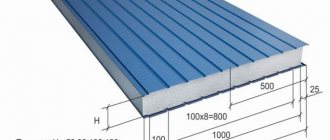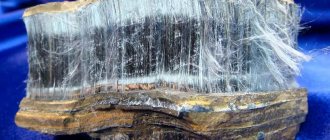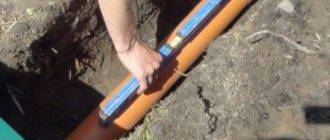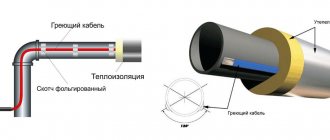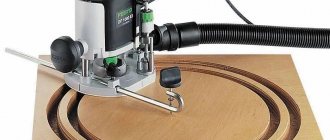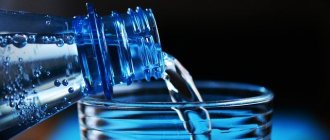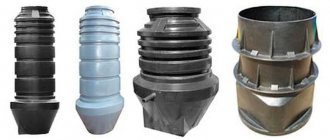Thermophysical properties of polypropylene
| Melting point, °C | 160—170 |
| Heat resistance by method, °C | 160 |
| Specific heat capacity (from 20 to 60ºС), cal/(g °C) | 0,46 |
| Thermal coefficient of linear expansion (from 20 to 100 °C), 1/°C | 1,1·10−4 |
| Brittleness temperature, °C | From −5 to −15 |
The demand for polypropylene pipes is constantly growing. The reason for this is a number of advantages:
- Durability
- Abrasion resistance
- Low density
- High hardness
- Corrosion resistance
- Low price
Polypropylene pipes are popular among professional and amateur builders for their relative ease of installation. The market offers a large selection of pipes and fittings with installation kits from many companies.
Among the leaders in production, the most notable companies are from Germany, the Czech Republic, Turkey, and China. The domestic production of polypropylene began in 1981 in Tomsk, the largest Russian production is located in. Domestic manufacturers close the top five.
What properties do different types of polypropylene pipes have?
Polypropylene is a thermoplastic synthetic non-polar polymer. The polymerization method using a Ziegler-Natta catalyst was invented in 1957, and since then the production of products with an isotactic structure characterized by high strength
, heat resistance and a high degree of crystallinity.
Polypropylene is a material that is resistant to acid, alkaline and saline solutions, as well as other inorganic substances. It does not absorb liquid and retains its electrical insulating properties over a wide range of temperatures.
Based on polypropylene, various modified materials are produced, such as thermoplastic, high-strength plastic and other environmentally friendly products. Recycling and recycling are a technological process, due to which polypropylene is actively displacing products made from other types of plastics from the world market.
Polypropylene melts at a temperature of +164…+170 °C
, Brinell hardness ranges from 40 to 70 MPa, brittleness temperature - from
-10 to -15 ° C
, tensile failure stress (kgf/cm2) - from 250 to 400, flexural modulus of elasticity (kgf) - from 6700 to 11900 .
A huge number of products that are popular on the market today are made on the basis of sheet propylene. To produce this material, the extrusion method is used. Depending on the shade, smoothness and other factors, sheets are divided into two classes. They are used for the production of pipeline systems, connecting them together in different ways, one of which is welding.
Types of polypropylene pipes
Polypropylene (accepted international designation - PP) has been used for quite a long time for the manufacture of pipes as a base material. However, only the development of modern technologies has made it possible to obtain products that can be used for hot water supply and heating systems.
Polypropylene itself is characterized by its pronounced inertness to the chemical effects of a possible liquid coolant medium. However, in terms of heat resistance and strength, different types can differ significantly from each other.
So, pipes made of this material are divided into three main types, which have their own designations:
PP-N are intended for cold water only
- PP-N is the first type of polypropylene pipes, inert to chemical influences, but not resistant to elevated temperatures. Therefore, they are intended for cold water supply, sewerage, drainage systems, ventilation and other applications where elevated temperatures are not expected. Very often, this type of pipe is prevalent for industrial production lines, as it is highly resistant to increased internal pressure.
The range of possible applications of PP-V pipes is somewhat wider, but for heating they are still “weak”
- PP-B is the second type of polypropylene pipes, which has all the same advantages of PP-N, but, in addition, has the ability to withstand temperature loads of low amplitude. Therefore, they can be installed on separate main sections of “warm floor” systems. And also in hot water supply circuits, provided that the water or coolant does not heat above 50 degrees.
However, the main scope of application of PP-B is different. Most often, such pipes are used for sewer systems, since the material from which they are made has a sufficient degree of impact strength and heat resistance for this area.
Only PPR pipes are fully suitable for heating systems
- PPRC, PPR or PP-3 is the most advanced type of pipes that is used in hot water supply and heating systems, that is, where temperatures can exceed 50 degrees and there is a possibility of increased compression loads. Increased heat resistance and mechanical strength are achieved thanks to special production technologies, in which ethylene molecules are introduced into the molecular lattice of propylene during synthesis.
PPR are pipes that are most widely used in domestic conditions, as they have a pronounced resistance to internal pressure and temperature changes.
Polypropylene pipes (PPR), used in domestic conditions, in turn, are divided into several types, depending on resistance to baric loads: PN -25; PN -20; PN -16; PN -10. Their main characteristics are given in the table:
| Type of polypropylene pipes | Nominal working pressure | Scope of pipe use | |
| MPa | technical atmospheres (kgf/s²) | ||
| PN-10 | 1 | 10.21 | Connection to the “warm floor” circuit, the coolant in the system of which has a temperature of no higher than 45 ° C, or cold water supply. This type of pipe is designed for a system pressure of no more than 1 MPa. It is the most affordable due to its rather low performance characteristics. |
| PN-16 | 1.6 | 16.32 | Cold and hot water supply with a temperature of no more than 60˚C and a pressure of no more than 1.6 MPa. |
| PN-20 | 2 | 20.40 | Cold and hot water supply in an autonomous system with low pressure and no water hammer. The coolant temperature for this type of product should not exceed 80˚C, and the pressure should not exceed 2.0 MPa. |
| PN-25 | 2.5 | 25.49 | Hot water supply and heating with coolant up to 90÷95˚С, including in the central heating system. The pressure for which they are designed is 2.5 MPa. |
Each type of pipe is produced in a fairly wide range of diameters, internal and external: on which the wall thickness depends
| Outer diameter, mm | PN-10 | PN-16 | PN-20 | PN-25 | ||||
| Internal Ø, mm | Wall thickness, mm | Internal Ø, mm | Wall thickness, mm | Internal Ø, mm | Wall thickness, mm | Internal Ø, mm | Wall thickness, mm | |
| 16 | — | — | 11.6 | 2.2 | 10.6 | 2.7 | — | — |
| 20 | 16.2 | 1.9 | 14.4 | 2.8 | 13.2 | 3.4 | 13.2 | 3.4 |
| 25 | 20.4 | 2.3 | 18 | 3.5 | 16.6 | 4.2 | 16.6 | 4.2 |
| 32 | 26 | 3 | 23 | 4.4 | 21.2 | 5.4 | 21.2 | 3 |
| 40 | 32.6 | 3.7 | 28.8 | 5.5 | 26.6 | 6.7 | 26.6 | 3.7 |
| 50 | 40.8 | 4.6 | 36.2 | 6.9 | 33.2 | 8.4 | 33.2 | 4.6 |
| 63 | 51.4 | 5.8 | 45.6 | 8.4 | 42 | 10.5 | 42 | 5.8 |
| 75 | 61.2 | 6.9 | 54.2 | 10.3 | 50 | 12.5 | 50 | 6.9 |
| 90 | 73.6 | 8.2 | 65 | 12.3 | 60 | 15 | — | — |
| 110 | 90 | 10 | 79.6 | 15.1 | 73.2 | 18.4 | — | — |
Naturally, the values of diameters and wall thicknesses directly affect the resistance of pipes to temperature and pressure, which, in principle, determines the duration of their possible operation in certain conditions:
| Coolant temperature ˚С | Service life, years | Pipe type | |||
| PN-10 | PN-16 | PN-20 | PN-25 | ||
| Permissible excess pressure (kgf/cm²) | |||||
| 20 | 10 | 13.5 | 21.7 | 21.7 | 33.9 |
| 25 | 13.2 | 21.1 | 26.4 | 33 | |
| 50 | 12.9 | 20.7 | 25.9 | 32.3 | |
| 30 | 10 | 11.7 | 18.8 | 23.5 | 9.3 |
| 25 | 11.3 | 18.1 | 22.7 | 28.3 | |
| 50 | 11.1 | 17.7 | 22.1 | 27.7 | |
| 40 | 10 | 10.1 | 16.2 | 20.3 | 25.3 |
| 25 | 9.7 | 15.6 | 19.5 | 24.3 | |
| 50 | 9.2 | 14.7 | 18.4 | 23 | |
| 50 | 10 | 13.9 | 17.3 | 23.5 | 21.7 |
| 25 | 8 | 12.8 | 16 | 20 | |
| 50 | 7.3 | 11.7 | 14.7 | 18.3 | |
| 60 | 10 | 7.2 | 11.5 | 14.4 | 18 |
| 25 | 6.1 | 9.8 | 12.3 | 15.3 | |
| 50 | 5.5 | 8.7 | 10.9 | 13.7 | |
| 70 | 10 | 5.3 | 8.5 | 10.7 | 13.3 |
| 25 | 4.5 | 7.3 | 9.1 | 11.9 | |
| 30 | 4.4 | 7 | 8.8 | 11 | |
| 50 | 4.3 | 6.8 | 8.5 | 10.7 | |
| 80 | 5 | 4.3 | 6.9 | 8.7 | 10.8 |
| 10 | 3.9 | 6.3 | 7.9 | 9.8 | |
| 25 | 3.7 | 5.9 | 7.5 | 9.2 | |
| 95 | 1 | 3.9 | 6.7 | 7.6 | 8.5 |
| 5 | 2.8 | 4.4 | 5.4 | 6.1 | |
The data presented in the tables is the result of long-term testing of pipes under various conditions, which even theoretically may arise during their operation, so it is worth taking them into account in the process of selecting the required material.
Polypropylene pipes can have different colors, but when choosing them you should not pay special attention to it (perhaps only from an aesthetic point of view) since the external color does not in any way determine the characteristics of the products and does not affect their quality.
A red or blue stripe may be applied to the surface of some pipes - it serves as a specific indicator of the purpose of a particular type. Thus, blue color is applied to cold water supply pipes, and red indicates the ability of the products to withstand elevated temperatures in the hot water system or heating circuit.
When purchasing pipes, be sure to pay attention to their markings.
In addition to colored stripes, the pipes are marked with letters, which indicate their characteristics and intended purpose for installation in certain water supply or heating systems, and you also need to pay attention to it. The meaning of the marking indicators corresponds to the information given in the tables.
As can be seen from the presented characteristics, PN-20 products are optimally suited for the heating system, but the ideal option would still be PN-25 pipes, which have pronounced resistance to elevated temperatures and pressure, even with a good margin.
Distinctive features of polypropylene
Currently, these products have replaced steel structures due to the following advantages:
- aesthetic appearance;
- wide area of use;
- duration of the operating period (for cold water - 100 years, for hot water - 50 years);
- no fear of high blood pressure and significant temperature changes;
- low specific gravity;
- increased rigidity and strength;
- resistance to chemical components;
- environmental cleanliness;
- excellent sound-absorbing properties;
- vibration resistance;
- low thermal conductivity;
- maintainability;
- ease of installation;
- no operating costs;
- no silting of the inner surface;
- impossibility of corrosion;
- ease of use;
- reasonable cost.
In addition to a lot of positive characteristics, it is not without drawbacks. There are few of them, but it is worth paying attention to them:
- limited plasticity;
- slight linear expansion;
- fear of ultraviolet radiation;
- unacceptability of low temperatures (except for ferrous products).
Marking of polypropylene pipes
When choosing polypropylene pipes, in addition to the PP type and the presence of reinforcement in the marking, you must also look at the maximum operating pressure. According to GOST, this parameter is designated PN and a number from 10 to 25.
Marking of polypropylene pipes
Depending on this designation, PPR pipes are distinguished as follows:
- PN10 – thin-walled for cold water and “warm floors” with water up to +450C.
- PN16 – universal for cold water and hot water supply up to +600C.
- PN20 – thick-walled for water with temperatures up to +950C.
- PN25 – with reinforcement for hot water supply and heating (also up to +950C).
For a short period of time, one or another PPR pipe for water supply can withstand exceeding the specified temperatures. But with prolonged excessive heating, it will gradually begin to collapse. And as a result, its service life of half a century declared by manufacturers will be significantly reduced.
Welding and heating time of polypropylene pipes
General information about propylene pipeline
Quite a long time has passed since the use of polypropylene pipes for heating began for the experience of use to show that in the usual version they are not very suitable for these purposes. High temperature loads and pressure do their job, and the pipeline is subject to deformation.
As a result, propylene pipes, despite all their advantages, began to lose to classical metal in service life, although “de jure” manufacturers indicated completely different time frames for their products.
Engineers found a solution and began to use reinforcement when producing plastic pipes for heating. This made it possible to increase the service life of polypropylene pipes to 50 years, while maintaining all their advantages.
Main pipe diameters according to GOST
The diameter in the marking of PPR water pipes is indicated as the outer diameter. Moreover, the larger it is and the higher the PN, the thicker the pipe wall. Products of 16–20 mm are used for installing water pipes throughout the apartment and cottage. 25–32 mm is for the riser. Larger diameter options are intended for pipelines in multi-storey buildings, main networks and sewerage.
How to correctly calculate the diameter of a pipe based on its purpose
Russia
Domestic manufacturers of polypropylene pipes on the construction market are represented by the companies POLITEK, RVK, PRO AQUA, SANTRADE and HEISSKRAFT. Good quality, a wide range of products on store shelves and a clearly structured supply chain distinguish the top three.
The RVC trademark belongs to Orenburg. The company produces unreinforced pipes PN 10, PN 20 with diameters from 16 to 125 mm. Reinforced with aluminum “speciAL” (PP-R/AL/PP-R) in the range from 20 to 63 mm and fiberglass “PBK-ORANGE” (PP-R/GF-PP-R/PP-R) with a diameter of up to 125 mm.
The company produces a full line of fittings and fasteners.
The main drawback of RVK pipes at first was the failure to maintain the exact diameter of pipes from different batches. Today, according to the company itself, this flaw no longer exists.
PRO AQUA
The only manufacturer producing polypropylene pipes capable of withstanding a pressure of 79.5 atm. This safety margin guarantees a long service life of the pipeline. The pipes are designed for an operating temperature of 95°C.
According to test data, the strength of PRO AQUA pipes is 1.6 times higher than that of Chinese analogues.
Pipe diameter from 20 to 125 mm. The company produces a full set of fittings, bypass elbows, fasteners and installation parts, valves, ball valves and filters.
Aluminum reinforcement
There are solid and perforated reinforcement with aluminum foil.
Continuous reinforcement with aluminum foil is the most economical option for reinforced pipes.
In this case, a thin layer of aluminum is located between the layers of propylene, due to which the structure of the pipe is significantly strengthened. But these types of products, as well as others, are distinguished by a number of limitations in operation:
- the water temperature should not reach +60 °C, otherwise the pipe may become deformed and burst if overheated;
- all joints should be cleaned before soldering, which will significantly reduce the time spent on installing the system;
- the temperature at which aluminum-reinforced pipes freeze is only -5 °C. Therefore, when using this type of polypropylene pipe in a private house, it is strictly forbidden to turn off the heating;
- Experts do not recommend using these types of products to supply hot water, since due to constant temperature changes, the aluminum layer may collapse over time.
Aluminum perforation means a mesh with small holes. During the extrusion of polypropylene pipes, viscous material enters the perforations, thereby ensuring adhesion between the polymer and metal.
Thanks to aluminum reinforcement, the coefficient of thermal expansion is significantly reduced. However, some difficulties may arise during the installation of engineering systems. When socket welding, the aluminum shell and outer layer of polymer are first removed, and the pipe is cleaned to an amount that corresponds to the depth of its insertion into the fitting.
There are types of polypropylene pipes that do not require removal of the outer layer during installation. They, in turn, also have some disadvantages:
- Only the outer layer of the product, equal to half the wall thickness, is attached to the fitting;
- a nozzle for welding equipment is required;
- After you cut the pipe, it will need to be trimmed.
Glass fiber reinforcement
Types of pipes marked PPR-FB-PPR consist of two layers of polypropylene, between which fiberglass is located, which is why this product is called a “fiberglass” pipe.
A pipe reinforced with glass fiber compares favorably with a product with aluminum reinforcement:
- installation does not require calibration and cleaning;
- material and time costs are reduced due to the fact that the soldering procedure is similar to the connection of solid plastic pipes or other stripped polymer products;
- a pipe reinforced with fiberglass does not delaminate because it has a homogeneous structure;
- Glass fiber increases the rigidity of the pipes.
The disadvantage of a fiberglass pipe is that its thermal expansion is 6% higher than that of products with aluminum reinforcement.
Internal reinforcement with polypropylene
These types of products are essentially metal-plastic pipes, the outer layer of which is made of polypropylene. Such pipes are resistant to high temperatures.
The disadvantages of this type of polypropylene pipes are characterized by:
- multilayer - the presence of adhesive joints of two different materials;
- attaching only the outer layer of the product to the fitting;
- the possibility of contact of reinforcement with the transported medium.
Metal-polymer polypropylene pipes
Modern types of polypropylene pipes are distinguished by a classic five-layer metal-polymer construction, shown in the figure below:
This type of polypropylene pipes is used for water supply and heating systems.
Modern polypropylene products have a multilayer construction, just like metal-plastic products. The only difference is that for a classic metal-plastic pipe, PEX or PE-RT polyethylene is used as a polymer, and not polypropylene.
Below is a small table that will help you understand the technical characteristics of all types of polypropylene pipes and the features of their application:
| Types of reinforcement | Specifications | ||||
| Maximum temperature, °C | Minimum temperature, °C | Thermal expansion, deformation | Maximum pressure, atm | Scope of application | |
| Solid aluminum | 60 | 5 | Average | 1 | Cold water system |
| Perforated aluminum | 70 | 10 | Average | 1.5 | Open type heating |
| Fiberglass | 90 | 20 | Low | 2 | Hot water supply system, heating, heated floor |
| Composite | 95 | 20-30 | Absent | 2,5–3 | Any |
Czech
The Czech Republic is represented on the domestic market by Wavin Ekoplastik and Fv Plast
Wavin Ekoplastik
The Czech company Wavin Ekoplastik uses random, a PP-R copolymer, for cold water supply pipes. And for heat-resistant pipes - high-quality heat-stabilized PP-RCT, similar to those from German manufacturers.
The products of this company are in demand in the domestic market due to high quality fittings and shut-off valves. Additional components allow you to lay a pipeline of any configuration. The price of Wavin Ekoplastik products is not much different from their German counterparts, and their reliability is not inferior to them. The only disadvantage of products from the Czech Republic is the not very attractive gray color of the products, which requires decoration.
/p{amp}gt;
Fv Plast
FV-Plast pipes are inferior to Ekoplastik in popularity due to the poorly developed dealer network in our country. The quality is no worse than that of its closest competitor. The pipes of this company are designed for use in cold and hot water supply pipelines, underfloor heating and heating systems.
It is necessary to note the exceptional lightness of FV-Plast pipes, which facilitates the installation of heated floors.
The FV-Plast company has made the production of reinforced polypropylene pipes a priority. The technology involves reinforcement with aluminum foil and fiberglass.
The manufacturer has provided a wide selection of related parts: fittings, shut-off valves and pipe fastening systems.
Conclusion: Having examined both options for Czech pipes, we can state that they do not differ in quality from German ones, and the price is still lower. The only indicator in which they are inferior is the fairly large coefficient of thermal expansion of unreinforced pipes.
MANUFACTURERS OF POLYPROPYLENE PIPES
Domestic and foreign manufacturers offer a wide selection of high quality polypropylene pipes. Moreover, the products of Russian concerns (Valtec, Pro Aqua) are not inferior to foreign brands.
| Manufacturer | Polypropylene material | Operating temperature, ºC | Working pressure, bar | Outer diameter, mm | Wall thickness, mm | Service life, years |
| Valtec (Russia) | PPR | 70-95 | 9-25 | 20-110 | 2,8 — 8,3 | 50 |
| BANNINGER (Germany) | PP-RST, PP-RCT, PP-RCT, PP-R CT | -10 +95 | 0-10 | 20-110 | 2,3-15 | 50 |
| Ecoplastic FIBER (Netherlands) | PP-RCT | up to +70 | 6-35 | 20-125 | 2,5-4.0 | 50 |
| About Aqua (Russia) | PP-R | -10 +100 | 0-10 | 20-125 | 3,4-20,8 | 50 |
In our company you can order Valtec products. It is used for external and internal communications and has an optimal combination of price and quality. As the official distributor of this Russian-Italian manufacturer, we have the opportunity to offer you Valtec PP pipes and fittings at a better price than our competitors.
Türkiye
Turkey, one of the first countries producing polypropylene pipes, conquered the Russian construction market. Among Turkish manufacturers, the most recognizable are TEBO, PILSA, VALTEC, KALDE, JAKKO.
TEBO technics polypropylene pipes comply with all European standards and have a number of competitive advantages:
- High quality raw materials supplied from Germany and South Korea;
- Wide range of models;
- Long service life;
- No marriage.
A wide range of pipes and related materials provide a full cycle of installation operations for engineering communications for any purpose. The TEBO technics brand produces pipes with diameters from 20 to 160 mm, fittings, manifolds, shut-off valves and components. The service life of products for hot water is 30 years, for cold water - 50.
In addition to conventional PP pipes, the model range has been expanded to include reinforced pipes. Pipes reinforced with aluminum have a minimal coefficient of linear expansion. Fiberglass provides increased lateral stiffness.
The most famous brand among professional builders. PILSA Plastik Inc. widely represented in 50 countries around the world. PILSA Plastik Inc is part of the Wavin industrial group, the largest European manufacturer of polypropylene products. Of particular interest to consumers is the versatility of using Pilsa pipes at temperatures from -10°C to 95°C. The elastic material prevents frozen water from destroying the pipes.
Pilsa brand products have a number of advantages:
- Low thermal conductivity;
- High heat resistance;
- Good throughput;
- Pipes and connections do not require maintenance;
- Attractive appearance.
The range of pipes and additional elements is perhaps the richest of all possible. Excellent quality and low price guarantee the company great demand among customers.
But popularity carries with it danger. In the markets you can find fakes from Chinese handicraft workshops.
VALTEC
VALTEC offers consumers single-layer and multi-layer pipes and fittings made of high-strength polypropylene PPR-100 with diameters from 20 to 110 mm. The pipes are intended for drinking and domestic cold and hot water supply systems, as well as for process pipelines transporting non-aggressive liquids and gases. The company produces multilayer polypropylene pipes VALTEC PP-FIBER, reinforced with glass fiber and PP-ALUX - aluminum foil.
The form of delivery of pipes is 2 and 4 meter sections. A fairly modest set of fittings and shut-off valve elements.
The construction market reacts sluggishly to the products of this brand.
Read more: Which computer glasses to choose?
/p{amp}gt;
KALDE is well known for its quality products. The line is represented by unreinforced, aluminum and fiberglass reinforced pipes with a diameter of 20 to 110 mm.
Advantages of KALDE reinforced pipes:
- Reduction of linear expansion by 75%;
- Increased throughput by 20%;
- High impact strength at low temperatures;
- High stability.
All pipeline elements are made of white and gray polypropylene.
The range of fittings includes polypropylene, combined with metal, threaded brass, compression and press fittings. In addition to pipe products, there is no shortage of manifolds, wall kits, ball valves and valves on the market. The manufacturer offers coarse filters, equipment for installation and welding.
Jakko was founded in 2002 in Kazakhstan as a joint venture with Turkey. The company quickly established a wide dealer network in the CIS and ensured the supply of high-quality products. In 2006, it switched to its own production in Turkey.
This brand produces a standard set of polypropylene products in the diameter range from 20 to 125 mm. The brand is little known, the products are little studied, and the reviews are contradictory. For this reason, it is very difficult to recommend Jakko products. Practitioners refer to the identity of Jakko products in terms of quality and range of related materials with VALTEC. And here the price of products in a particular region can play a decisive role.
Characteristics of PPR pipes and scope
Each PPR product is marked with encrypted data on the diameter and wall thickness, operating pressure, service class, pipe material and much more.
There are several modifications of polypropylene, each of which has its own operating characteristics:
- PPH – products made from homopolymer, used exclusively in cold water supply.
- PPV pipes are made of block copolymer, the scope of application is cold water supply and installation of heated floors.
- PPR is the most common material - a random copolymer of polypropylene, used in the installation of heated floors, for hot water supply and water heating.
- PPs – polypropylene with improved heat-resistant properties, rarely used in domestic water supply systems.
For cold water supply and drinking water supply, it is enough to use PN10 pipes made of homopolymer, since the low temperature environment practically does not cause linear expansion, and the pressure in the household pipeline is below 1 MPa.
In heating systems and for supplying hot water, it is advisable to install reinforced pipes with fiberglass or aluminum foil (basalt fiber has only recently appeared on the pipe market and has not yet gained much popularity).
Reinforcement in a hot water pipeline is necessary as it restrains the linear expansion of polypropylene and prevents deformation of the pipes. Products with an aluminum layer can be used in any conditions, since the metal foil provides additional rigidity without practically increasing the outer diameter. Fiberglass is best used indoors.
Important! If the pipeline section will pass through open air, it must be protected from ultraviolet rays. The ideal solution would be to use a polyurethane foam shell.
The main reasons for choosing polypropylene pipes for the heating circuit
The reasons, which, in fact, are the advantages of polypropylene pipes are as follows:
- Polypropylene has a distinctly low weight, which greatly simplifies its delivery to the work site and installation itself - no special devices or equipment are required.
- If you have the necessary tools, polypropylene pipes are easy to install, and welding techniques can be learned very quickly.
- The manufacturing material is absolutely harmless for residential premises, since it does not change its chemical composition even with strong heating and does not emit toxic fumes into the air.
- Thanks to the stabilizers included in polypropylene, pipes can withstand water hammer and thermal loads, and even freezing of water inside without rupture.
- The smooth inner walls of the pipes promote uniform, turbulence-free and noise-free circulation of the coolant.
- Both the pipes themselves and their components are inexpensive. A wide selection of components allows for installation of a circuit of any complexity.
A little training and any owner can carry out independent installation
- A circuit made of high-quality pipes, if installed correctly, will last at least 20–30 years.
- The aesthetic appearance of the pipes makes it possible not to spoil the interior, and the contour itself usually does not require either painting or additional decoration.
So, polypropylene pipes with a reinforcing aluminum layer are excellent for heating circuits of autonomous and central systems. In addition, the installation of this material is quite simple and feasible even for people who have no experience in such work. After several training sessions on the installation of individual components, the assembly process of the entire circuit can be carried out on your own.
Ventilation material
Ventilation pipes ensure the flow of fresh air into the room and the removal of exhaust air: their strength in this case is not the main criterion. The main thing is that these products were lightweight, since they are often supported only by partitions or suspended ceilings.
Residential premises are equipped with pipes with a diameter of 100 or 125 mm; industrial systems will require preliminary calculations. The cross-sectional shape of such products can be square, round, oval or rectangular. The installation process uses the socket method, so no welding machine is required.
Which PPR pipes are more convenient to install?
The easiest and fastest way to install, of course, is single-layer polypropylene pipes. For installation it is enough:
- cut the product with a hacksaw or pipe cutter,
- rub away burrs on the edges,
- connect structural elements using a fitting or special glue (liquid welding).
We recommend that you read: Replacing old pipes with polypropylene on your own
The principle of installing multilayer PPR pipes is the same, however, in this case cold welding is not suitable, since it will only glue the outer layers and will not provide a reliable connection.
Therefore, multilayer pipes are best connected by hot welding or using special multilayer threaded fittings.
Attention! Do not attempt to thread a pipe or fitting yourself. There is a high probability that the resulting threads will not match, which means the connection will not be airtight. It is better to buy fittings with ready-made standard threads.
Pipes with aluminum reinforcement require special preparation before installation. If layers of fiberglass pipes are literally soldered into each other, then aluminum foil is connected to polypropylene using glue, which means there is a possibility of delamination.
To avoid this negative consequence, before welding PPR pipes with aluminum reinforcement, it is necessary to remove a small section of foil and solder the inner and outer layers of polypropylene together. Thanks to this action, water will not be able to penetrate between the layers, which means there will be no threat of deformation and destruction of the pipeline.
Blitz tips
When using pipes made of various materials, you need to know some of their features:
- Copper pipe can be welded using low-temperature and high-temperature methods, which is more reliable. But when exposed to high temperatures, copper darkens and loses its attractiveness. So you need to be prepared to mask the seam;
- The copper weld area is stronger than the rest of the surface. Therefore, it can burst anywhere, just not at the seam;
- When installing metal-plastic products, it is better to use a fitting with a press sleeve, then the connection point will never bother you. Otherwise, the nut will have to be tightened from time to time;
- Even a beginner can weld polypropylene, but heating below normal will lead to leakage, and overheating will narrow the gap. The repairability of the material is zero, so it is better to entrust the installation of the system to a professional.
